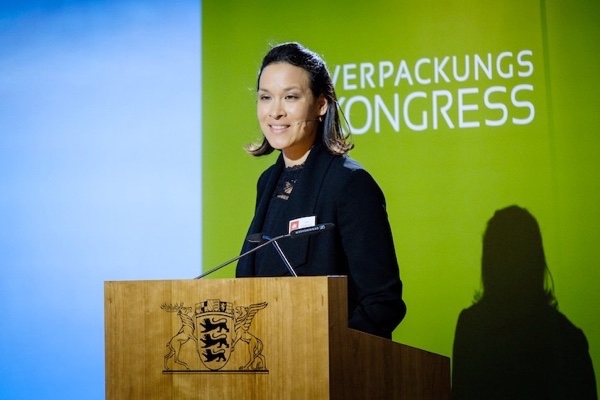Packaging
dvi: Packaging recycling is a success

Friday 20. November 2020 - In their annual report, the Federal Environment Agency and the Stiftung Zentrale Stelle Verpackungsregister (Central Packaging Register Foundation) have pointed out the latest successes of packaging recycling. The rates of material recycling have risen significantly since the Packaging Act came into force and exceed the forecasts.
The use of recycled materials and life cycle assessments are now the most important drivers and setting the course.
For the future it is now necessary to extend the use of recycled material to the food packaging sector. Especially with regard to the growing online trade and the issue of one-way versus reusable packaging, transparent life cycle assessments are now needed. Because sustainability must not be left in the dark. It is not the image that is decisive, but the facts.
“The figures presented today on the material recycling of packaging since the Packaging Act came into force on 1 January 2019 show how seriously the industry takes the issue of sustainability and with how much élan and innovative power it is driving it forward,” states Kim Cheng, Managing Director of the German Packaging Institute (Deutsches Verpackungsinstitut e. V.) (dvi). “The target values of all three material fractions glass, paper, cardboard, carton (PPK) and lightweight packaging (LVP) have risen significantly since the Packaging Act came into force. The forecasts and expectations of the regulators were clearly exceeded. Today, between 80 and 90 per cent of the packaging collected via the dual system goes into material recycling and thus into the cycle. In the case of plastics, material recycling has been increased by a good 50 percent. These are balance sheets of a success story,” says Cheng.
“The Federal Environment Agency was right to point out the importance of the successes in packaging recycling for environmental protection and the climate,” the dvi managing director continues. “For example, every tonne of plastic that we recycle as a material saves around two tonnes of CO 2. Extrapolated to the total amount of materially recycled plastic in Germany, UBA estimates that this saves around 900,000 tonnes of CO 2 per year”.
Nevertheless, dvi does not see an end to the success story of packaging recycling. “We can achieve even more”, says Kim Cheng. “With the Federal Environment Agency’s talk of using more recyclate we need more support and guidance from politicians and regulators. Because recycled plastic can do much more than just flowerpots and park benches. The biggest and most sustainable opportunities lie in the field of food packaging. Here we can turn a really big wheel in terms of circulation, if the necessary certifications and approvals are obtained.
To increase the amount of rPET for food contact material, the dvi believes it makes sense “to ensure that material from disposable PET bottles does not end up in textiles. In addition, extending the mandatory deposit to PET trays for eggs, fruit, vegetables or baked goods is worth considering,” suggests Kim Cheng.
With regard to the volume of packaging in online retailing and the fundamental consideration of reusable to disposable packaging, the dvi demands clear and neutral ecological balances. “Reusable packaging must also be collected, cleaned and transported for reuse,” says Cheng. “The question of whether one-way or reusable is more sustainable should be answered by transparent and fact-based life cycle assessments. We must not grope in the dark here. The decision must not be made on the basis of image or green euphony, otherwise it will fall on our feet, and above all our environment. Those who want sustainable progress must not shy away from neutral analysis and its fact-based results”.
